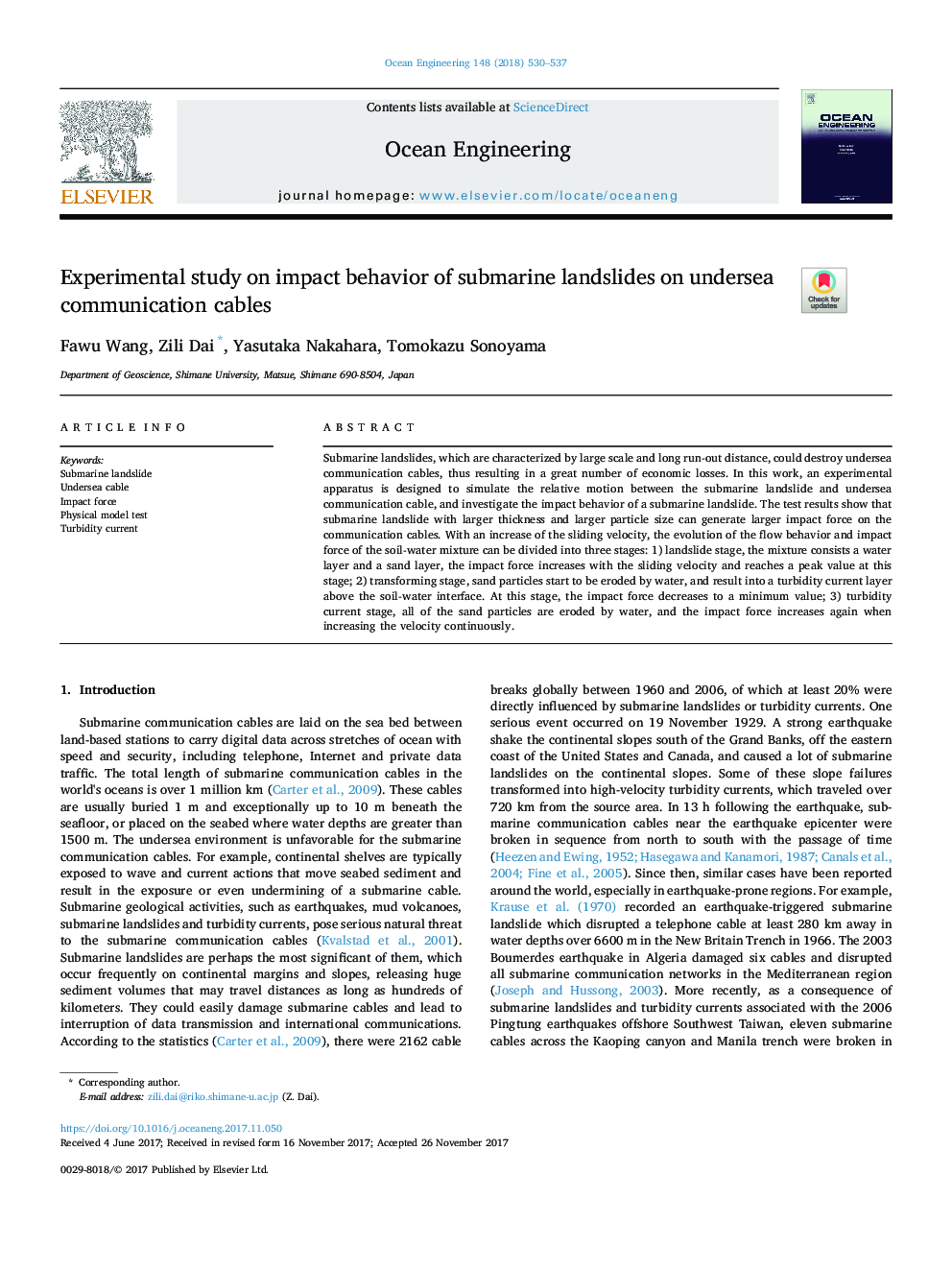| Article ID | Journal | Published Year | Pages | File Type |
|---|---|---|---|---|
| 8063638 | Ocean Engineering | 2018 | 8 Pages |
Abstract
Submarine landslides, which are characterized by large scale and long run-out distance, could destroy undersea communication cables, thus resulting in a great number of economic losses. In this work, an experimental apparatus is designed to simulate the relative motion between the submarine landslide and undersea communication cable, and investigate the impact behavior of a submarine landslide. The test results show that submarine landslide with larger thickness and larger particle size can generate larger impact force on the communication cables. With an increase of the sliding velocity, the evolution of the flow behavior and impact force of the soil-water mixture can be divided into three stages: 1) landslide stage, the mixture consists a water layer and a sand layer, the impact force increases with the sliding velocity and reaches a peak value at this stage; 2) transforming stage, sand particles start to be eroded by water, and result into a turbidity current layer above the soil-water interface. At this stage, the impact force decreases to a minimum value; 3) turbidity current stage, all of the sand particles are eroded by water, and the impact force increases again when increasing the velocity continuously.
Related Topics
Physical Sciences and Engineering
Engineering
Ocean Engineering
Authors
Fawu Wang, Zili Dai, Yasutaka Nakahara, Tomokazu Sonoyama,
